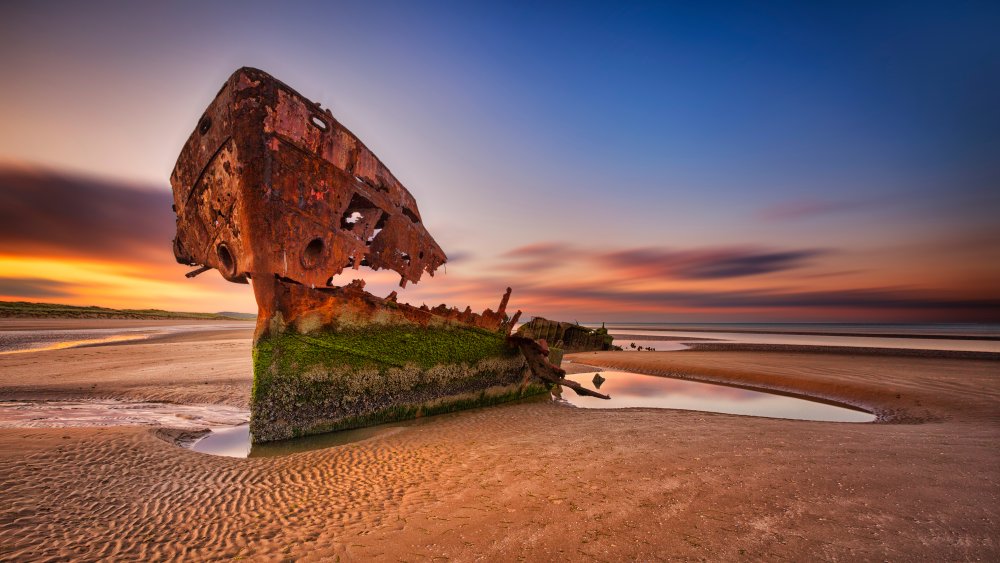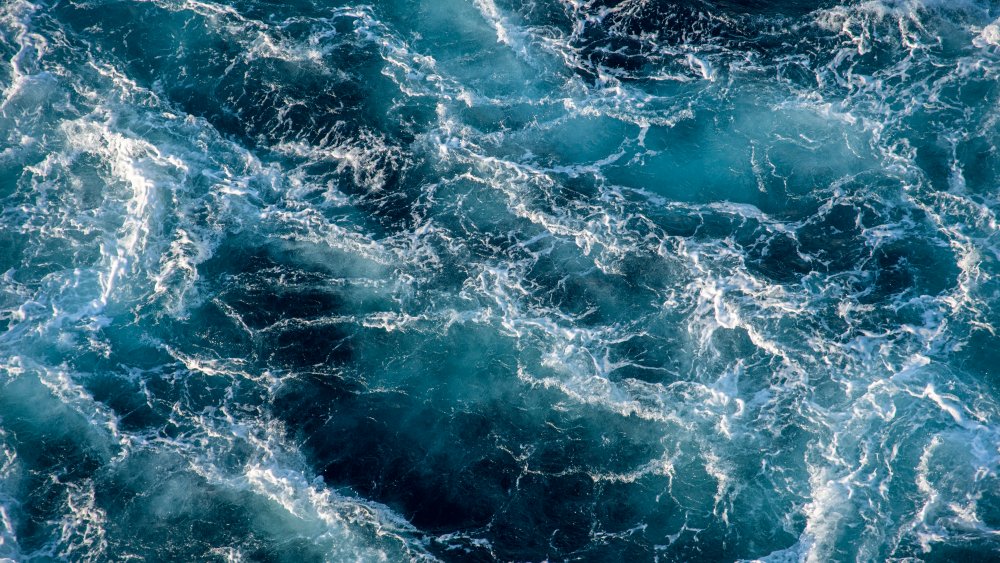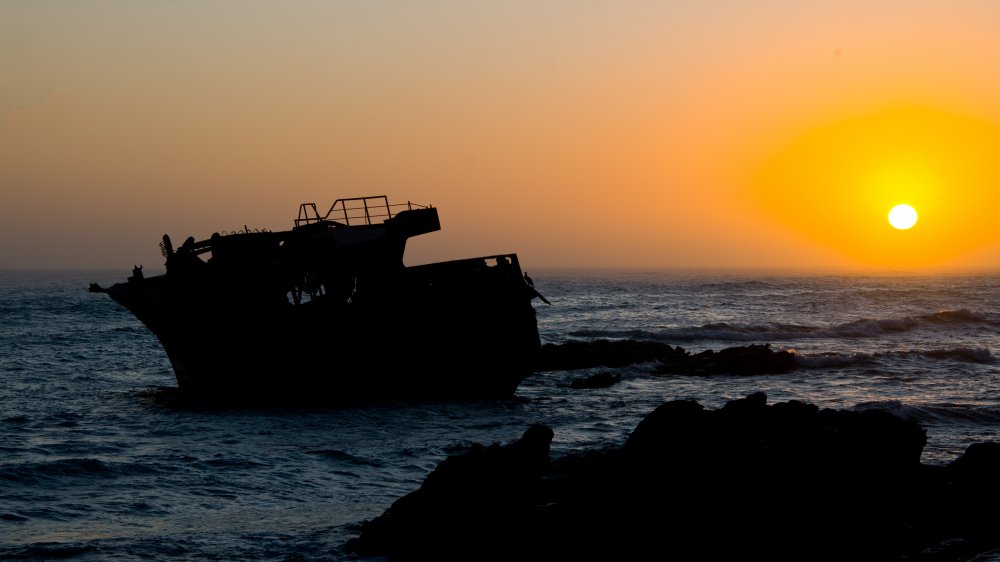Why Is It Called The Dragon's Triangle?
There's no doubt most people have heard of the Bermuda Triangle, that deadly swath of sea in the Caribbean known for the ships and planes that have vanished there without a trace. But it's not the only oceanic area known for strange disappearances. On the other side of the world there's another patch of water with a reputation for dragging wayward ships into the unknown that has been the subject of several books and even the setting of a Tomb Raider game. If you ever find yourself in Japan, make sure to think twice before boarding a ship bound for the Dragon's Triangle.
The boundaries for this maritime mystery zone shift depending on who you ask, but typically it's thought to extend downward from Japan's Izu Island to the beginning of the Philippine Sea. It's commonly referred to as the Devil's Sea or Dragon's Triangle, a name possibly derived from Chinese myth. For Folklore Tuesdays author Joyce Chin writes that in some Chinese mythology the seas are ruled by four dragon kings who can either be benevolent forces, or wreak havoc in the form of typhoons and earthquakes if not properly appeased.
A dark history
Some say the legend of the Dragon's Triangle goes back hundreds of years. According to Shamseer Mambra writing for Marine Insight one of the earliest tales tells of Genghis Khan's grandson, Kublai Khan, losing a fleet of ships in the area while trying to reach Japan in the 13th century. It's more likely, however, that speculation surrounding the Dragon's Triangle has a much more modern origin.
In the 1950s a Japanese research vessel called the Kaio Maru No. 5 was sent into the Dragon's Triangle and never returned. Eventually wreckage of the ship was found, but none of the crew were ever seen again. In the '70s and '80s pseudoscience writers began linking the Dragon's Triangle with the Bermuda Triangle. They claim the spots are just two of many places on earth with mysterious dark energy, known in New Age circles as Vile Vortices, which accounts for the many disappearances.
Debunking the claims
Researcher Brian Dunning of the Skeptoid podcast found little evidence to back up those claims. Although there are stories of military and research vessels frequently going missing in the area, there is no substantive historic evidence to back them up. Furthermore, references to the Dragon's Sea did not begin appearing until long after the Kaio Maru No. 5 disaster when the first sensational books linking it to New Age beliefs were published.
As for the Kaio Maru No. 5, Dunning illuminates a tragically simple explanation to what happened. The area the wreckage was found in is home to several active underwater volcanoes, including one called Myōjin-Shō which erupted and breached the surface of the ocean around the time that the ship went missing. The most likely explanation for the Kaio Maru No. 5's disappearances is that it was sunk during that geological event, not lost to supernatural forces.


